Today, lets try to get into the skull of a young Norman Rockwell.
I live close enough that I am able to get to the Rockwell museum in Stockbridge MA a couple times a year. So I have had the good fortune to see many of his master works in person, as they have rotated through the museum. Normally I am floored by the more mature works we are all familiar with: Icons like ‘The Lineman’ from 1949, ‘Blacksmith Boy’ from 1940, ‘The Runaway’ from 1958, and of course, ‘The Four Freedoms’ which was painted in 1943. I obsess over that buttery stroke. That thick, (and I mean really thick) impasto passages of paint, coupled with the yummy textural underpainted areas he decided to leave exposed, rather than bury under thick pigment. I could go on and on, right?
But this time I was utterly transfixed by a painting Rockwell did when he was 26 years old. I snapped some pics with my Iphone so I could remember what I was seeing.
My admiration wasn’t because of the technique he used when painting it, rather, it was the mind behind the painting. Usually when I look at the dates of a Rockwell, it is as a measuring stick of how young he was when he painted those works. (You know, just to make myself feel bad.) I admire the later technique during his 30’s and 40’s much more.
However with this one, how he put the “Cobbler Studying Doll’s Shoe’ together… the choices he made, rival and maybe even surpass his more famous paintings. This is a masterpiece of storytelling and a thesis on how to control your viewer.
Let me tell you how I experience this painting, and you can see for yourself if you agree.
First I take in the entire image. Like reading the mood of a room when you first walk in.
As a result I quickly see the expression of the old man. I wonder why he looks perplexed? Rockwell is tapping my emotions, I empathically need answers and start the hunt for what is troubling him. In contrast he keeps the girls expression neutral. That was a calculated choice. This painting is more about the Cobbler than the girl. My friend Todd Lockwood always asks in critique, “Who is the Star of your painting?” The answer is clear.
I find the large shoe, ah he is a cobbler. It is toughened leather, something that many would have put out to pasture- he is saying has a lot of life left in it. That tells me a lot about him. Makes me feel he is somehow wise, and could teach me a thing or two.
Then I find the jewel of the painting, the doll shoe. Even if you see the doll shoe first, we confirm the shape and profession immediately with the big shoe.
But here is the genius of the little shoe, it isn’t just the shoe, which isn’t a perfect silhouette anyway. I actually think he made its silhouette tough to read on purpose. It could have been a clearer read, and without the big shoe to compare it too, we might not not have known it was a shoe. Rockwell wants us to figure it out with the oldman.
The best artistic choice of the shoe area for me isn’t even that he chose to make it the highest contrast point in the painting (which was a great decision.) No, what really makes me go ‘Damn Rockwell…’ is the decision to blur out lost edge of the girls shoulder. (I bet it was visible in the photo ref.) What this does is allow us to really observe the little shoe, with no high contrast edges directly behind to compete. He wants us to linger there, figure it out- with little edge distraction- which gives us the time/space to do it.
Then the final cherry on top, still looking for clues we wander down the girls dress, guided by the forearm and shin of the man, to the doll itself. She almost submerged in shadow. Set back like that so as to savor the clue as if it were the third act of the film.
And he takes us to the finish line with the extra punctuation of the doll’s shoeless foot, resting on the Cobler’s slipper. Heh… a cobler that isn’t even wearing proper shoes. “Damn Rockwell…”
All in all a master class in using value, contrast and edge control to tell a story in one image and even control time itself as we wander where he wants us to when he wants us too.
Imagine for a second the doll was held out to the cobbler in one hand, shoe in other, hi contrast, girl crying. That is how I imagine many of us would do it given the assignment. That is how maybe even Rockwell would have done it in his 30’s and 40’s as the later compositions while AMAZING were a bit more on the nose emotionally IMHO. And it would be a fraction as good, no matter how well we/he painted it.




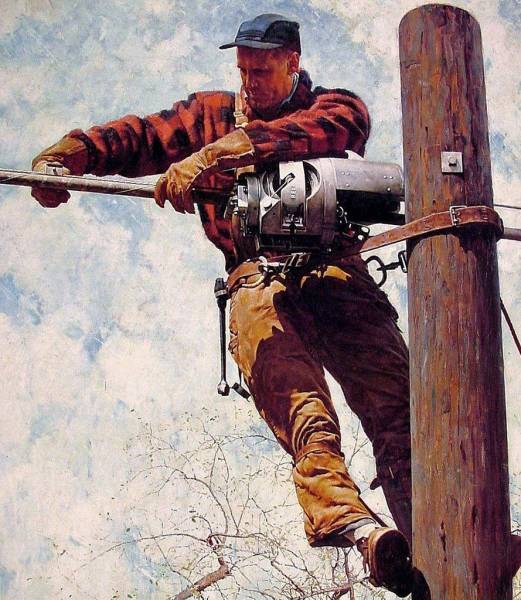

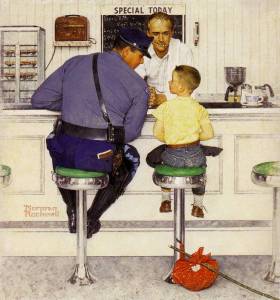
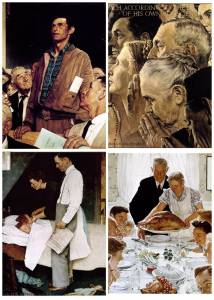
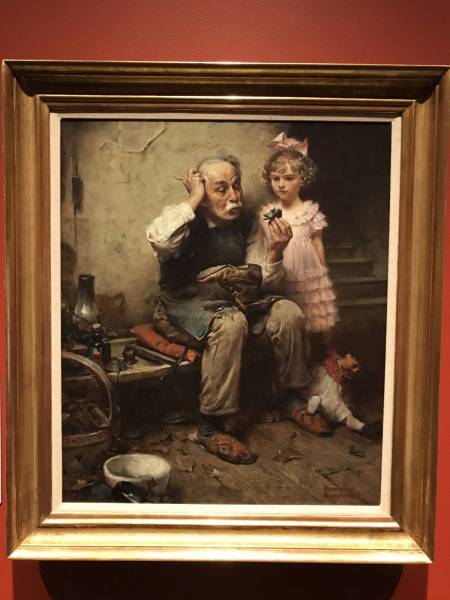
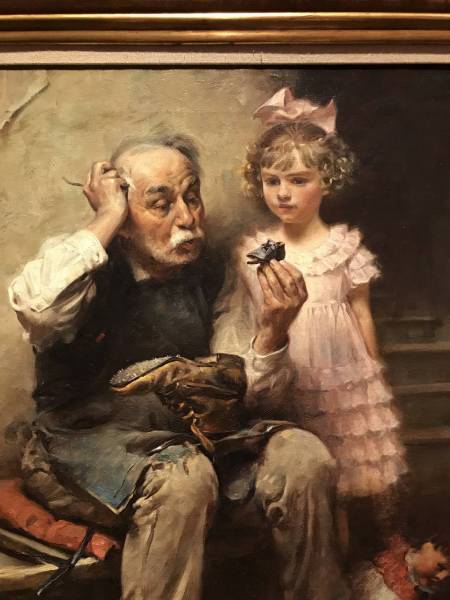
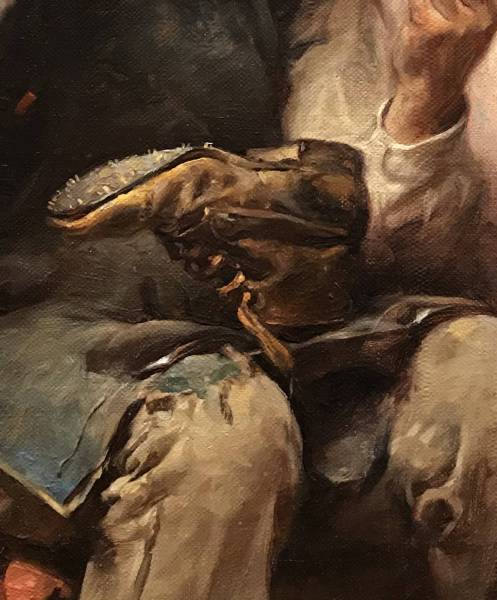
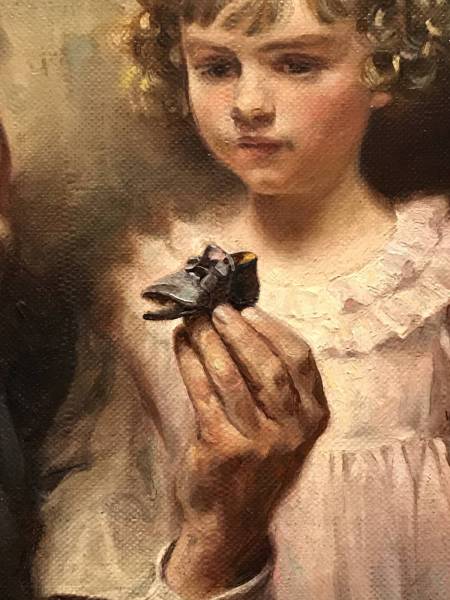
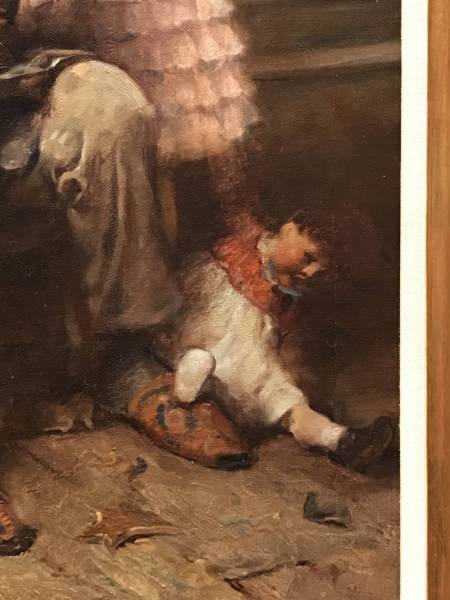
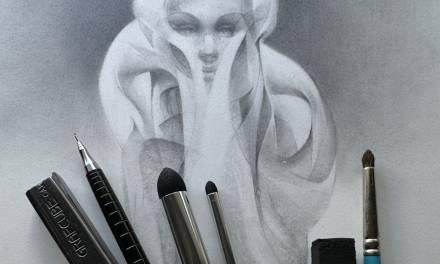
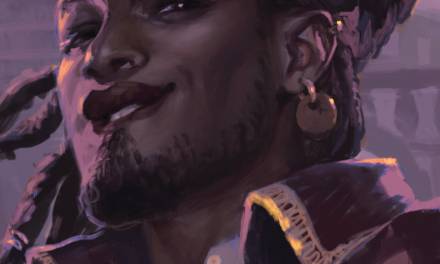
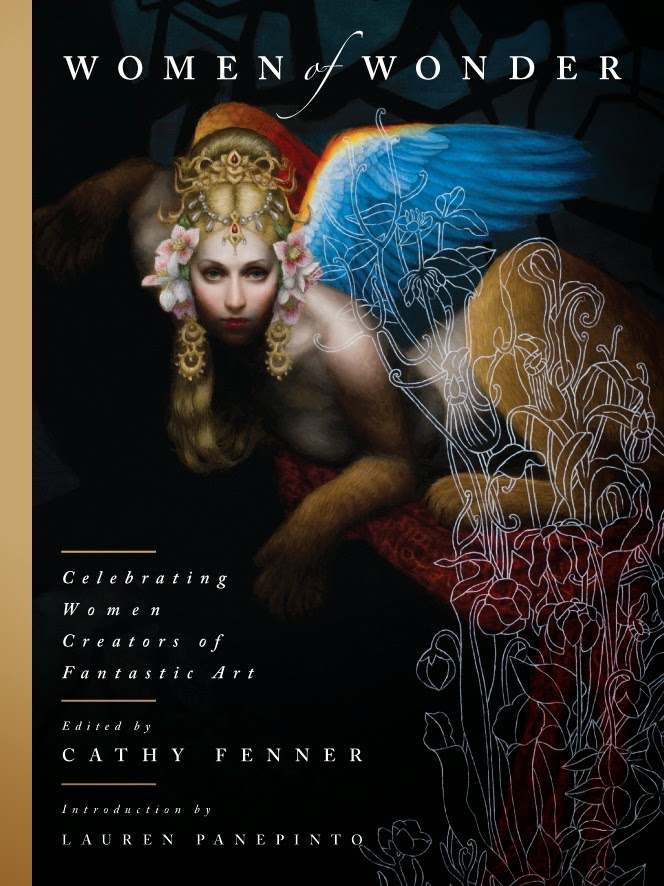
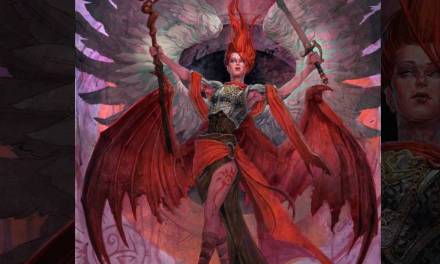
Brilliant analysis Scott. I lingered on the whole image and loved your added points of the girls shoulder and the well worn shoe. I shall take a look at his work again!
Good call on the shoulder.
Rockwell was a master at telling a story in one image.
Also it plays off the old saying, “the shoemaker’s children go barefoot.” We can’t see her feet.
Very valuable commentary on a truly impressive painting. I would love to see that museum with artist friends some day. How incredible would it be to have this type of conversation in front of the painting?!?
-Andy